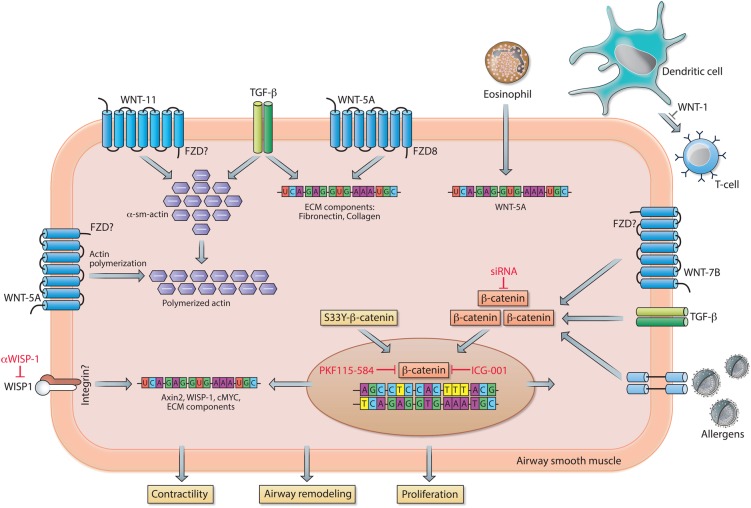Figure 4.
WNT signalling in asthma. In airway smooth muscle cells, WNT-5A activates Frizzled receptor (FZD)8, which together with TGF-β stimulation results in increased mRNA expression of extracellular matrix (ECM) components. In addition, WNT-5A, via a not further specified FZD, enhances actin polymerisation and contractile capacity of the smooth muscle cell. Eosinophil-driven airway inflammation stimulates the smooth muscle cells to increase WNT-5A expression. Increased expression of WNT-1 prevents dendritic cell-mediated activation of T cells, thereby attenuating airway hyper-responsiveness (AHR) and airway remodelling. WNT-11, via an unspecified FZD, conjointly with TGF-β stimulation causes upregulation of the contractile protein α-sm-actin. Activation of transcriptionally active β-catenin in response to WNT-7B, TGF-β and/or (aero)allergens results in augmented mRNA expression of ECM components and genes involved in cell proliferation. Similarly, ectopic expression of a non-degradable form of β-catenin (S33Y-β-catenin) enhances expression of ECM components. Transcriptional activity of β-catenin can be inhibited by PKF115–584 or ICG-001, whereas the canonical WNT target gene WNT1-inducible signalling protein-1 (WISP1) can be inhibited with neutralising antibodies. See main text for further details.

